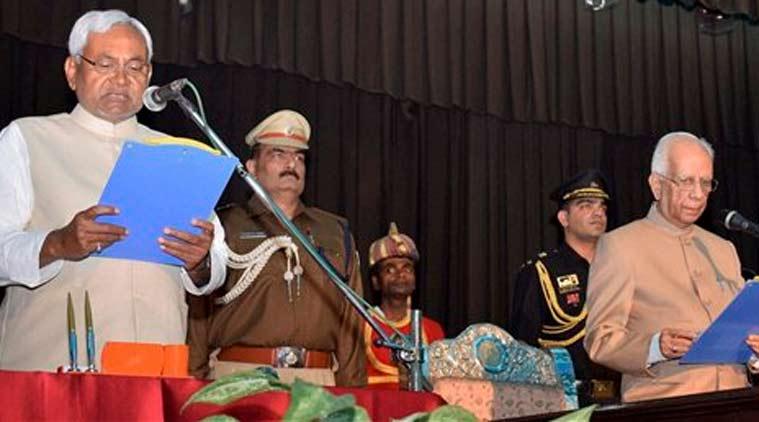The Procedure of Appointment of a Chief Minister (The Hindu)

- 29 Jan 2024
Why is it in the News?
Janata Dal (United) president Nitish Kumar took oath as Bihar Chief Minister for a record ninth time on Sunday, returning to the BJP-led National Democratic Alliance just 18 months after he left it, in his fifth switch in political loyalties since 2015.
About Chief Minister:
- According to Article 163 of the Indian Constitution, each state shall have a Council of Ministers led by the Chief Minister (CM) to assist and provide advice to the Governor in carrying out the state's functions.
- In the parliamentary system of governance, the Chief Minister holds the actual executive authority within states.
- While the Governor serves as the ceremonial head of the state, the Chief Minister serves as the head of the government.
- In the Indian political framework, the Chief Minister's role is analogous to that of the Prime Minister at the national level.
Appointment Process of Chief Minister:
- The Constitution of India does not lay down specific criteria for the appointment of a Chief Minister.
- Article 164 of the Indian Constitution stipulates that the Governor is responsible for appointing the Chief Minister, albeit with certain limitations.
- Traditionally, the leader of the largest party in the state legislature is typically chosen as the Chief Minister, following parliamentary conventions.
- Even individuals who are not members of the state legislature (both Houses) can be appointed as Chief Minister for a temporary period of six months, during which they must secure election or nomination (in the case of a bicameral legislature).
- In situations where no single party or pre-poll coalition secures a majority in the assembly (known as a hung assembly), the Governor exercises discretionary powers to appoint the Chief Minister, relying on individual judgment.
- The Constitution does not mandate the Chief Minister-elect to demonstrate majority support in the state assembly before assuming office.
- However, after the formation of the ministry, the Governor may request the Chief Minister to prove majority support within a reasonable timeframe.
Oath and Affirmation of Chief Minister:
- The third Schedule of the Indian Constitution outlines the "Forms of Oaths or Affirmations" to be taken by public officials.
- Typically, the Chief Minister's oath, solemnly administered by the Governor, constitutes a formal commitment to uphold the constitution and execute the responsibilities of the position with integrity and diligence.
Roles and Responsibilities of the Chief Minister:
- The Chief Minister serves as the principal advisor to the Governor on matters pertaining to the convening and adjournment of state legislative sessions.
- As the head of the State Legislative Assembly, the Chief Minister acts as the primary liaison between the Governor and the Council of Ministers.
- The Chief Minister possesses the authority to propose the dissolution of the legislative assembly to the Governor when deemed necessary.
- Additionally, the Chief Minister assumes the role of vice-chairman of the relevant zonal council on a rotational basis, serving a term of one year.
